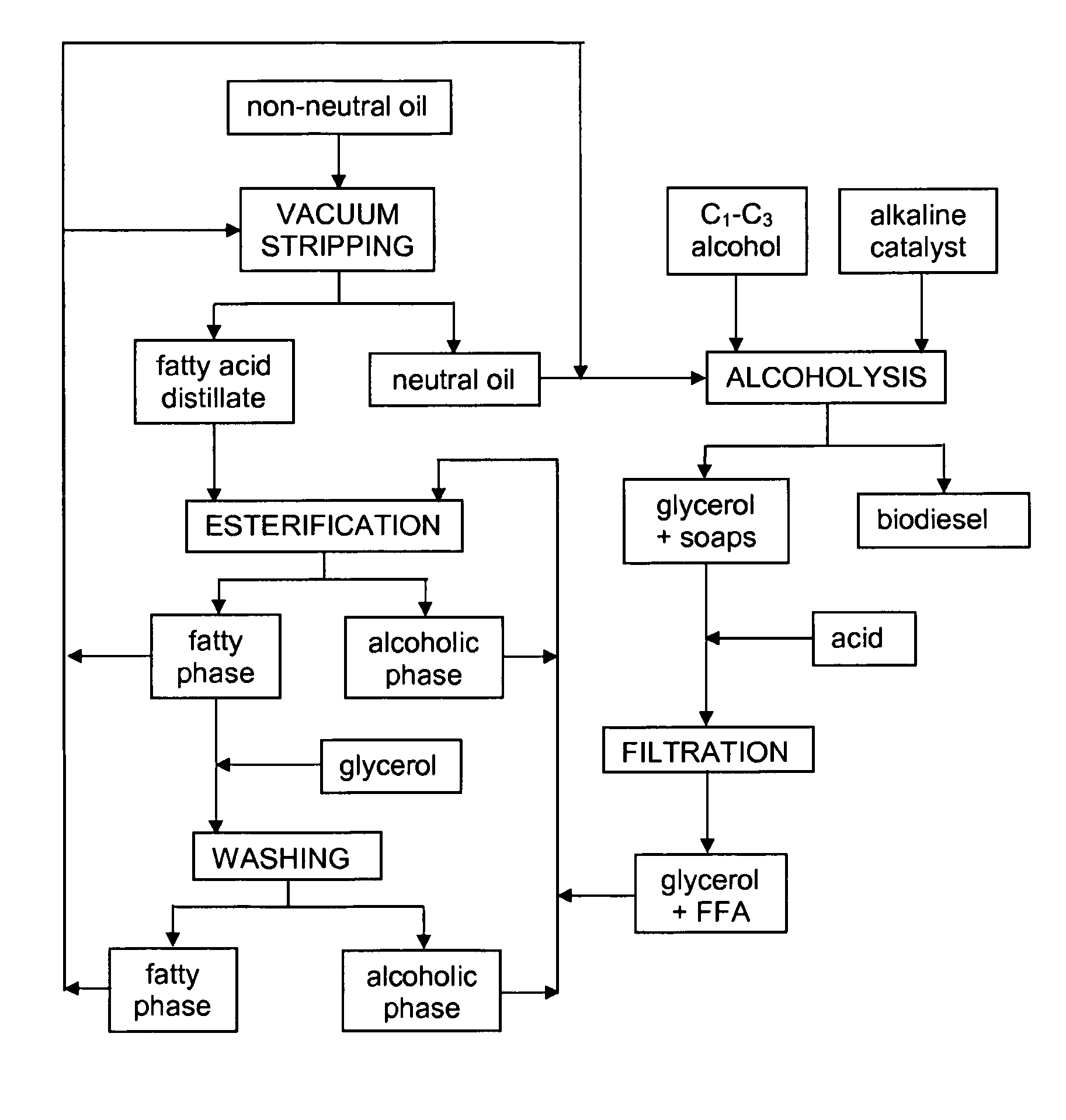Producing esters of fatty acid and C1-C3 alkyl alcohols
a technology of fatty acid and alkyl alcohol, which is applied in the field of producing esters of fatty acid and c1-c3 alkyl alcohol, can solve the problems of inability to remove the water formed by esterification, inability to use enzymes, and inability to remove unwanted side-products, so as to achieve the effect of maximising productivity and maximising yield
- Summary
- Abstract
- Description
- Claims
- Application Information
AI Technical Summary
Benefits of technology
Problems solved by technology
Method used
Image
Examples
example 1
[0052]In this example, a palm oil fatty acid distillate with an FFA content of 90% was mixed with pure glycerol in a molar ratio of 1:1. The mixture was introduced into a stirred reactor held at a pressure of 5 mbar absolute, and kept at 68° C. CALB L lipase (liquid enzyme from Candida Antartica lipase B supplied by Novozymes A / S Denmark) was added in a concentration of 175 LU per g FFA. After 8 hours reaction, the FFA content had been reduced to 7% due to the formation of mono-, di- and triacylglycerides.
[0053]This example shows that the liquid enzyme from Candida Antartica is capable of reducing high levels of FFA within a reasonable period of time.
example 2
[0054]In this example, the effect of the esterification temperature was investigated. The same palm oil fatty distillate and the same enzyme preparation were used as in example 1 and the FFA to glycerol ratio was again 1:1, but the enzyme dosage was only 100 LU per g FFA. After 8 hours reaction, the FFA content of the reaction carried out at 75° C. had dropped to 9% whereas when the reaction was carried out at the lower temperature of 58° c., the residual FFA content was higher at 15%. The experiment shows that operating at the higher of the two temperatures led to a larger extent of FFA esterification but the example does not indicate whether this difference is due to differences in enzyme activity or in water volatility.
example 3
[0055]In this example, another lipase was tested. The same palm oil fatty distillate as used in example 1 was used and the FFA to glycerol ratio was again 1:1. The enzyme tested was Lipozyme TL IM, an immobilised enzyme from Thermomyces lanuginosus supplied by Novozyme A / S, Denmark; it was used in an amount of 4% by weight on oil. The reaction temperature was 68° C. and the reactor was kept at 5 mbar absolute. After 6 hours the FFA content of the reaction mixture had fallen to 79%.
[0056]This experiment shows that Lipozyme TL IM is not a suitable enzyme for the process of the invention.
PUM
| Property | Measurement | Unit |
|---|---|---|
| temperature | aaaaa | aaaaa |
| temperature | aaaaa | aaaaa |
| temperature | aaaaa | aaaaa |
Abstract
Description
Claims
Application Information
 Login to View More
Login to View More - R&D
- Intellectual Property
- Life Sciences
- Materials
- Tech Scout
- Unparalleled Data Quality
- Higher Quality Content
- 60% Fewer Hallucinations
Browse by: Latest US Patents, China's latest patents, Technical Efficacy Thesaurus, Application Domain, Technology Topic, Popular Technical Reports.
© 2025 PatSnap. All rights reserved.Legal|Privacy policy|Modern Slavery Act Transparency Statement|Sitemap|About US| Contact US: help@patsnap.com

